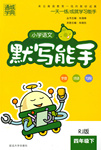题目内容
【题目】 My students were taking midterms when my phone erupted with urgent messages. “A student is having a panic attack,” texted a teaching assistant. I ran out of my office, down a flight of stairs and found the student — a pupil in my 350-person organic chemistry class — lying motionless on the ground outside the exam hall. “Did my exam really trigger a panic attack?” I asked myself. “Why am I not prepared to deal with a situation like this?”
It was my first time teaching the course. But I knew that the subject was challenging for my students. This was a source of stress for premedical students in particular, who feared that a low grade in organic chemistry would keep them from getting into medical school.
The following day, I was scheduled to lecture to the same class. I knew that I had to address what had happened during the midterm. So, I started by saying: “I want to take some time today to talk about something important. How many of you think that this is a weed-out course?” Half of my students raised their hands carefully. “I’m sorry to hear that,” I continued. “I want you all to know that I do not consider any of you to be weeds; you all deserve to be here.”
I flashed a slide of flowers in various shapes. I smiled at my students and said: “I think of you as flowers — different flowers with different needs. You may not bloom at the same time, but you will bloom! You may not do well in the midterm exam, but you will learn from your mistakes and do better in the final exam. I believe this. I believe in you.”
From that point on, my office hours were packed. Some asked about lecture topics and study strategies; others opened up about personal issues. I was amazed that a simple, frank discussion in lecture could make such a difference.
【1】What made the pupil have a panic attack?
A.Hiding personal issues.
B.The stress for high grades.
C.Lacking study strategies.
D.Failing to handle the situation.
【2】What does the underlined word “trigger” in Paragraph 1 most probably mean?
A.Cure.B.Prevent.
C.Frighten.D.Cause.
【3】Why did the author go to the same class the next day?
A.To give the lesson according to the arrangement.
B.To apologize and explain to the panicked student.
C.To give a speech on what happened in the test.
D.To persuade all the students to stay in the class.
【4】Which paragraph mainly shows the author’s encouragement to students?
A.Paragraph 2.
B.Paragraph 3.
C.Paragraph 4.
D.Paragraph 5.
【答案】
【1】B
【2】D
【3】A
【4】C
【解析】
本文是记叙文。作者的一个班级在参加期中考试时,一位学生因为考试压力恐慌症发作。作者因此对自己的课程进行了分析,改变了教学方式,给予学生更多鼓励,学生们更自信,和老师能敞开心扉进行交流。
【1】
推理判断题。根据第二段中的But I knew that the subject was challenging for my students. This was a source of stress for premedical students in particular, who feared that a low grade in organic chemistry would keep them from getting into medical school.可知,但我知道这门课对我的学生来说很有挑战性。这对医科预科学生来说尤其是个压力的来源,他们担心有机化学的低分会让他们进不了医学院。由此推知,高分的压力使那名学生恐慌症发作。故选B。
【2】
词义猜测题。根据上下文可知,一个学生在作者考试的时候,恐慌症发作,因此推断作者此处在自问:我这科目的考试会导致学生产生惊恐症吗?由此推知,划线词trigger表示“引起,促使”。故选D。
【3】
细节理解题。根据第三段中的The following day, I was scheduled to lecture to the same class.可知,第二天,我被安排去上同一门课。由此可知,根据课程安排作者第二天又来到这个班上课。故选A。
【4】
推理判断题。根据第四段中的I think of you as flowers — different flowers with different needs. You may not bloom at the same time, but you will bloom! You may not do well in the midterm exam, but you will learn from your mistakes and do better in the final exam. I believe this. I believe in you.可知,我把你们当成花朵,不同的花朵,有不同的需要。你们可能不能同时开花,但你们会开花的!你们可能在期中考试中做得不好,但你们会从错误中吸取教训,在期末考试中做得更好。我相信这一点。我相信你们。由此可知,第四段是作者对学生的鼓励。故选C。

 通城学典默写能手系列答案
通城学典默写能手系列答案